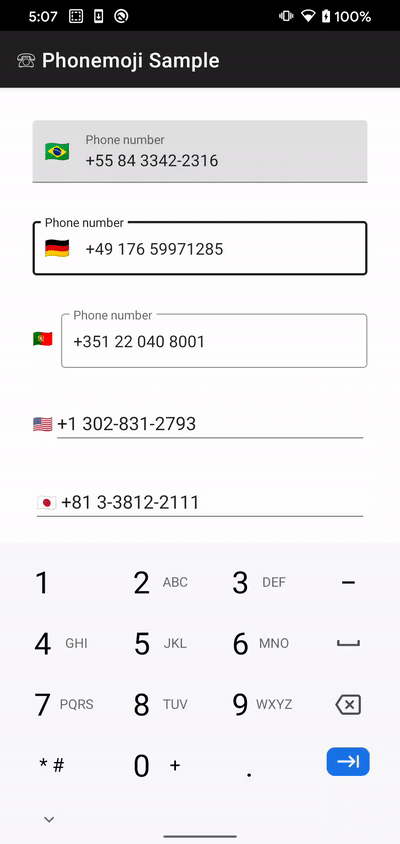If you're only interested in international numbers and you'd like to be able to show the flag of the country that matches the country code in the input, I wrote a small library for that:
https://github.com/tfcporciuncula/phonemoji
Here's how it looks:
